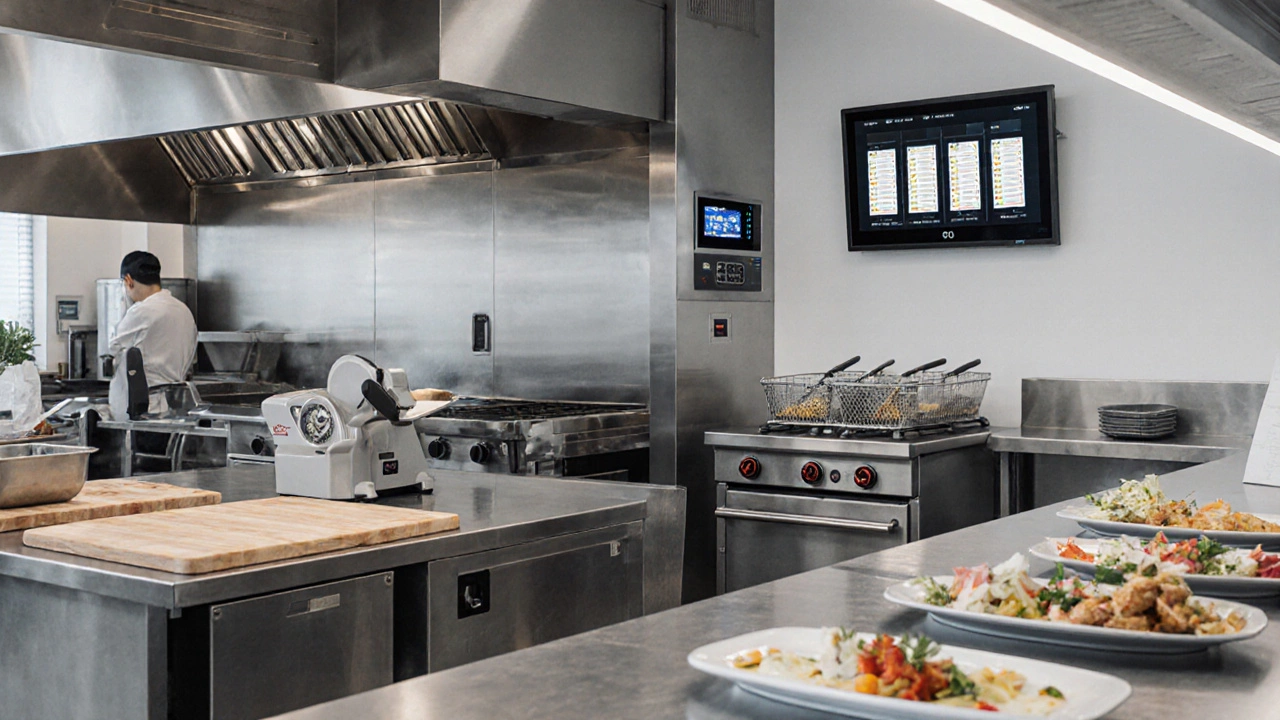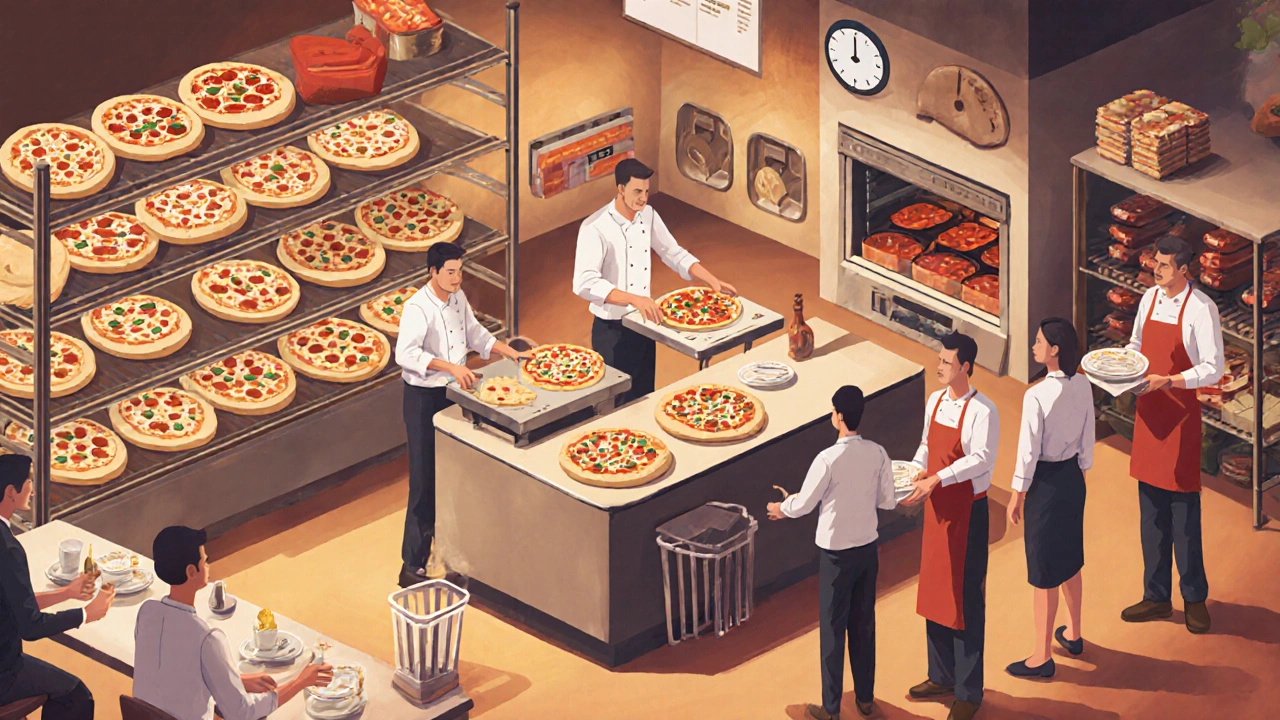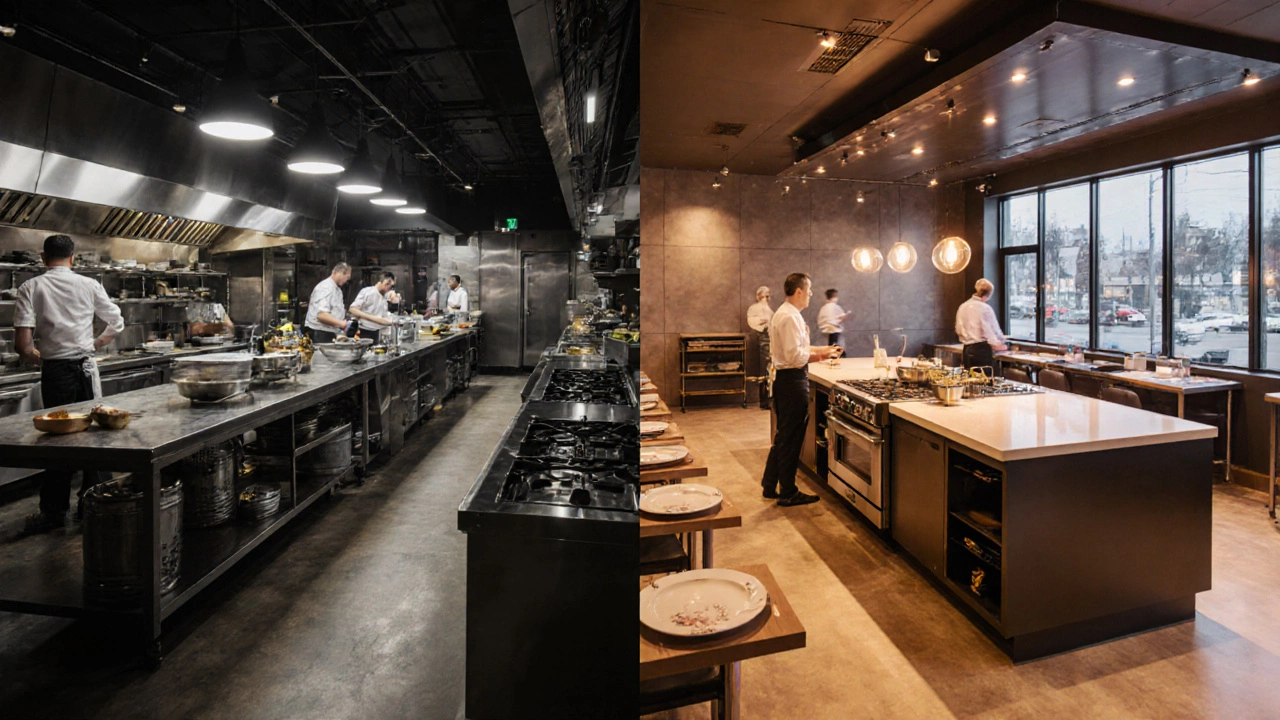Restaurant Waste Reduction Calculator
Calculate Your Savings
Estimated Savings
Implementing a Central Production Unit could reduce your waste by up to 30% through precise portioning and batch preparation.
When you hear the term restaurant CPU, you might picture a computer chip, not a bustling kitchen. In reality, a CPU in a restaurant stands for Central Production Unit. It’s the heart of the kitchen where ingredients are prepped, cooked, and plated before they head out to the dining floor. Think of it as a mini‑factory inside your restaurant, designed to speed up service, keep flavors consistent, and cut down waste.
What Exactly Is a Restaurant CPU?
A restaurant CPU is a dedicated area that consolidates the main cooking and assembly processes. Unlike a traditional line kitchen where each station works in isolation, the CPU brings prep, cooking, and plating under one roof. This layout lets chefs focus on high‑volume tasks while maintaining tight control over temperature, timing, and sanitation.
CPU vs. Traditional Line Kitchen: A Quick Comparison
| Aspect | CPU (Central Production Unit) | Line Kitchen |
|---|---|---|
| Layout | Single centralized hub | Multiple parallel stations |
| Workflow | Sequential, controlled flow | Simultaneous, station‑specific |
| Consistency | High - same prep and cooking conditions | Variable - depends on each chef |
| Space Efficiency | Optimized for volume | Often under‑utilized corners |
| Scalability | Easier to add lines or stations | Requires major redesign |
Key Components of a Restaurant CPU
Every effective CPU includes a handful of core zones. Below is a rundown of the most common parts:
- Prep Station: Cutting boards, slicers, and portioning scales. This is where raw ingredients are washed, trimmed, and measured.
- Cooking Station: Ranges, ovens, fryers, and grills arranged for quick batch cooking.
- Plating Area: A clean counter with plating trays, garnishes, and finishing sauces ready for service.
- Cold Storage: Walk‑in or reach‑in fridges that keep prepped items at safe temperatures.
- Inventory Management system: Often linked to the POS to track stock levels in real time.
- POS System and Kitchen Display System (KDS): Digital order tickets that guide the flow from prep to plating.
- HACCP compliance: A set of food safety checks embedded into each step.

Benefits of Switching to a CPU Model
Adopting a CPU isn’t just a fancy redesign-it brings tangible gains:
- Speedier service: With batch cooking, dishes are ready the moment a ticket pops up on the KDS.
- Reduced waste: Precise portioning at the prep station cuts over‑prepping by up to 30%.
- Consistent taste: Same cooking equipment and temperature control mean every plate tastes alike.
- Better staff utilisation: Employees can rotate between stations, reducing bottlenecks.
- Scalable operations: Adding a new line or expanding the menu only requires more space at the CPU, not a whole new kitchen.
Step‑by‑Step Guide to Building a Restaurant CPU
- Audit your menu. Identify items that can be batch‑prepared (sauces, proteins, sides). The more you can prep ahead, the bigger the payoff.
- Sketch the layout. Place the prep station closest to the cold storage, the cooking station in the centre, and the plating area near the service window.
- Select equipment. Choose high‑capacity ranges, a convection oven, and a commercial dishwasher that matches expected volume.
- Integrate technology. Connect your POS to a KDS that shows order priority and real‑time inventory alerts.
- Train the crew. Emphasise flow: prep → cook → plate. Use visual SOPs (Standard Operating Procedures) at each station.
- Implement HACCP checkpoints. Log temperature readings, allergen segregation, and cleaning schedules.
- Test and tweak. Run a soft opening, monitor ticket times, and adjust station placement or batch sizes as needed.

Common Pitfalls and How to Avoid Them
Even with the best plans, some restaurants stumble. Here’s what to watch out for:
- Overcrowding. Packing too many appliances into a small CPU kills airflow and slows staff. Keep clear aisles of at least 1meter.
- Poor ventilation. Heavy frying without proper hoods creates heat buildup and fire risk. Install a hood rated for the total BTU of your fryers.
- Ignoring food safety. Batch prep can tempt shortcuts, but HACCP logs must be updated every shift.
- Lack of communication. If the KDS doesn’t sync with the POS, orders can get lost. Run daily checksum tests.
- Rigid menus. A CPU thrives on repeatable dishes. Keep a rotating “specials” lane separate from the main line to preserve flow.
Real‑World Examples
Fast‑casual pizza chain: They moved from a decentralized kitchen to a CPU that pre‑bakes crusts, portions sauce, and stores toppings in a cold rack. Order times dropped from 12minutes to under 7minutes, and waste fell by 22%.
Upscale bistro: The owner installed a CPU where sauces are simmered in bulk, proteins are sous‑vide‑cooked, and final plating happens on a dedicated pass. Consistency scores in customer surveys jumped from 82% to 95% within three months.
Frequently Asked Questions
What types of restaurants benefit most from a CPU?
High‑volume concepts - like fast‑casual, quick‑service, and mid‑range diners - see the biggest gains because they can batch‑cook staples while still offering fresh options.
Can a small café afford a CPU?
Yes. Scale the CPU to the space you have - a single prep table, a compact combo oven, and a small plating area can still streamline workflow and cut costs.
How does a CPU affect food safety compliance?
Because each step is isolated, you can embed HACCP checks at specific checkpoints - after prep, before cooking, and after plating - making audits easier.
What equipment is essential for a CPU?
A reliable range or combi‑oven, a high‑capacity fryer, a walk‑in cooler, a POS‑linked KDS, and sturdy prep tables with built‑in scales are the basics.
How do I train staff for the new flow?
Start with visual SOPs posted at each station, run mock service drills, and use a “buddy” system where an experienced cook mentors a newcomer for the first two weeks.






